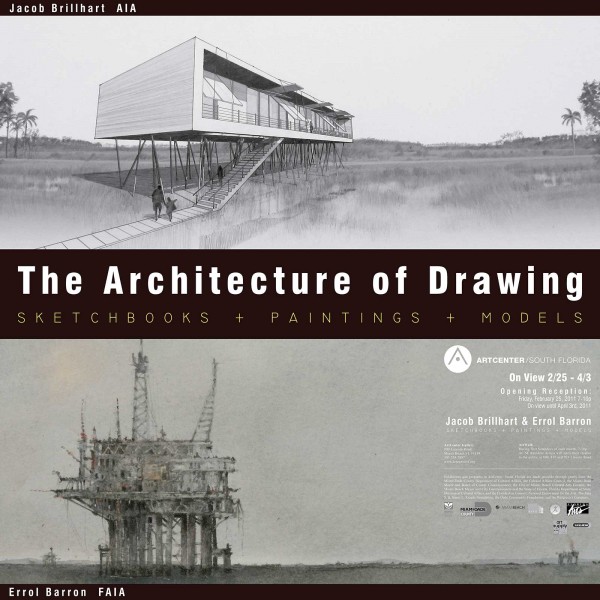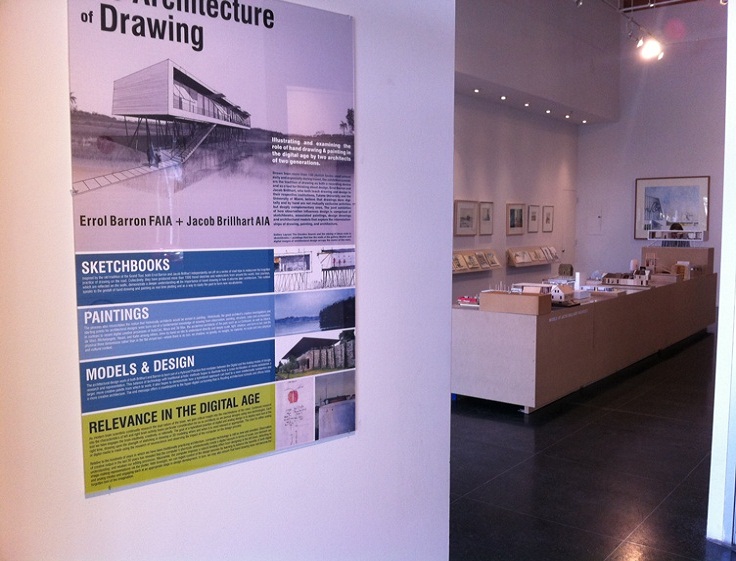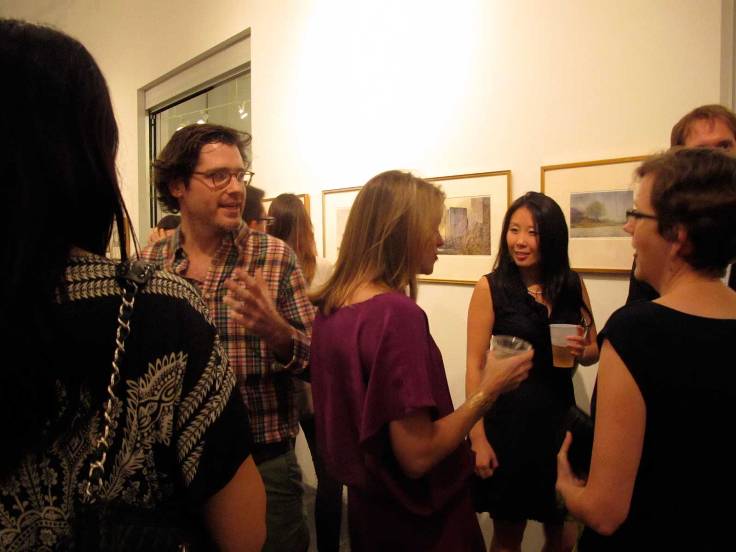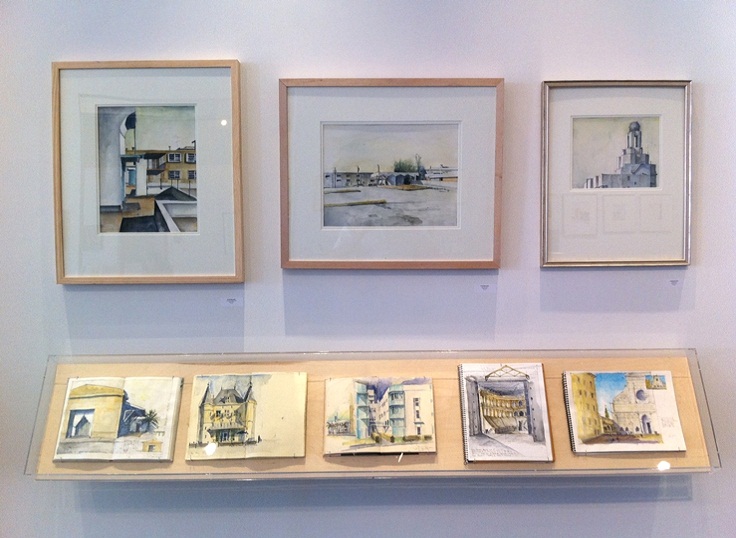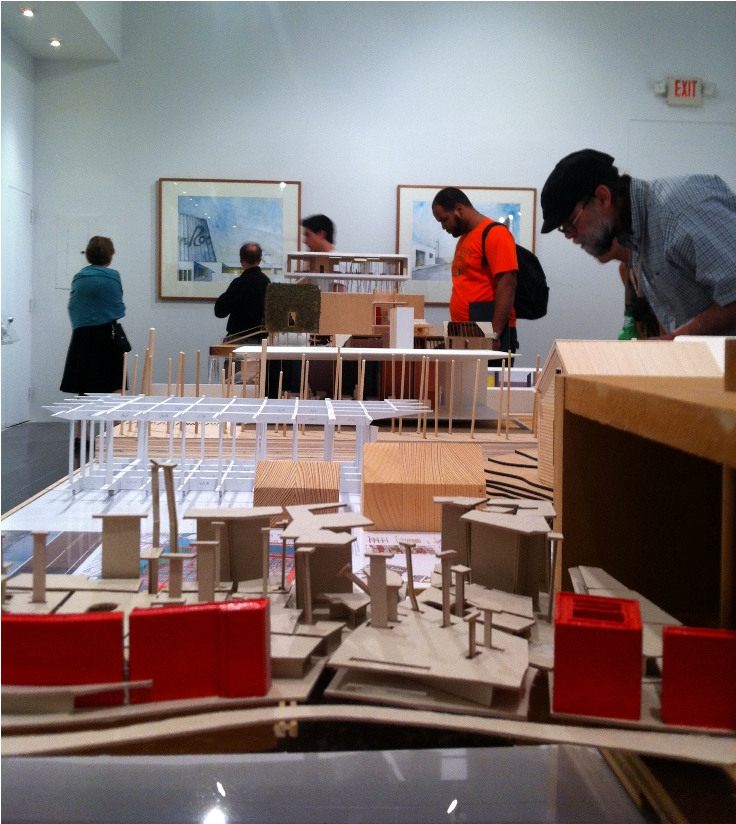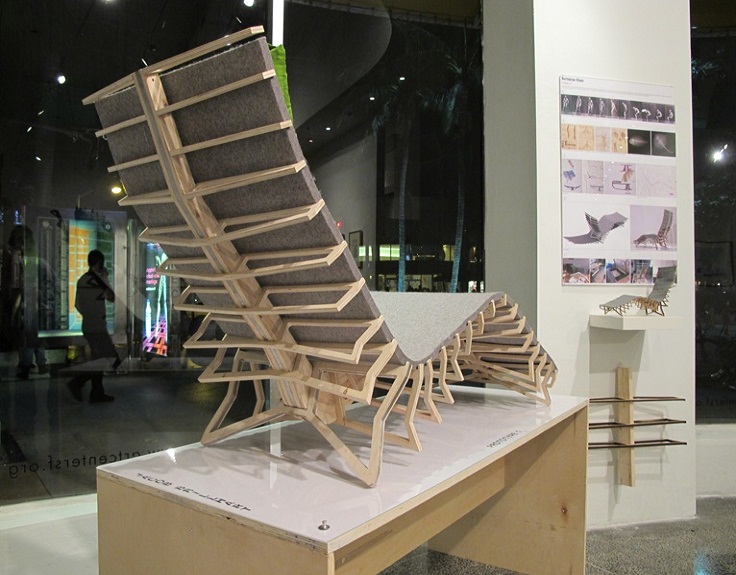SPACE: ART CENTER OF SOUTH FLORIDA
LOCATION: MIAMI BEACH, FL
DATES: FEBRUARY – MARCH 2012
CURATED BY: JACOB BRILLHART
Featuring the work of two architects of two generations, this exhibition examined the role of hand drawing in the digital age. The joint exhibition was comprised of more than 100 sketchbooks (used almost daily and especially during travel), associated paintings, design drawings and architectural models that explored the interrelationships of drawing, painting, and architecture – and illustrated how drawing serves as a tool for design. Errol Barron and Jacob Brillhart, who both teach drawing and design in their respective institutions, Tulane University and the University of Miami, believe that drawings done digitally and by hand are not mutually exclusive activities but deeply complementary ones.
A. Sketchbooks
Inspired by Le Corbusier and the Grand Tour, both Errol Barron and Jacob Brillhart have set off on a series of road trips to rediscover the forgotten practice of drawing on the road. Having made over 1500 travel sketches and watercolors throughout the world their journey in doing so hopes to build a deeper understanding of the importance of travel drawing in regard to how it informs later architecture. This subtext speaks to the gestalt of hand drawing and painting, as real time plotting, and as a way to study the past to form new vocabularies.
B. Paintings
An undercurrent of this exhibition is the resurrection of the idea that architects used to be painters. Historically, great painters’ creative investigations and starting points for architectural designs were born out of a fundamental knowledge of drawing from observation, painting, structure, color and composition. In contrast to recent digital creative processes of AutoCad, Maya and 3d Max, the great architects of the past such as Le Corbusier (as well as Alberti, da Vinci, Michelangelo, Vasari, and Kahn among others) drew by hand on site to understand directly and deeply scale, light, shadow, and form in full, real life physical three dimensions rather than in the flat virtual two –where there is no sun, no shadow, no gravity, no weight, no material, no scale and zero physical and cultural context. In the case of Le Corbusier, the practice of painting almost every morning channeled the soul and honesty within his theoretical and architectural inventions.
C. Architectural Models + Design
The architectural design work is born out of a Hybrized Practice that mediates between the Digital and the Analog modes of design practice, research and representation. This integration of technology with traditional artistic methods hopes to illustrate how a cross-fertilization of media establishes a larger, more creative palette from which to work; it also hopes to demonstrate how a hybridized approach can lead to a more intellectually substantive and a more creative architecture – offering a counterpoint to the hyper-digital cartooning that is flooding architectural schools and offices today.
